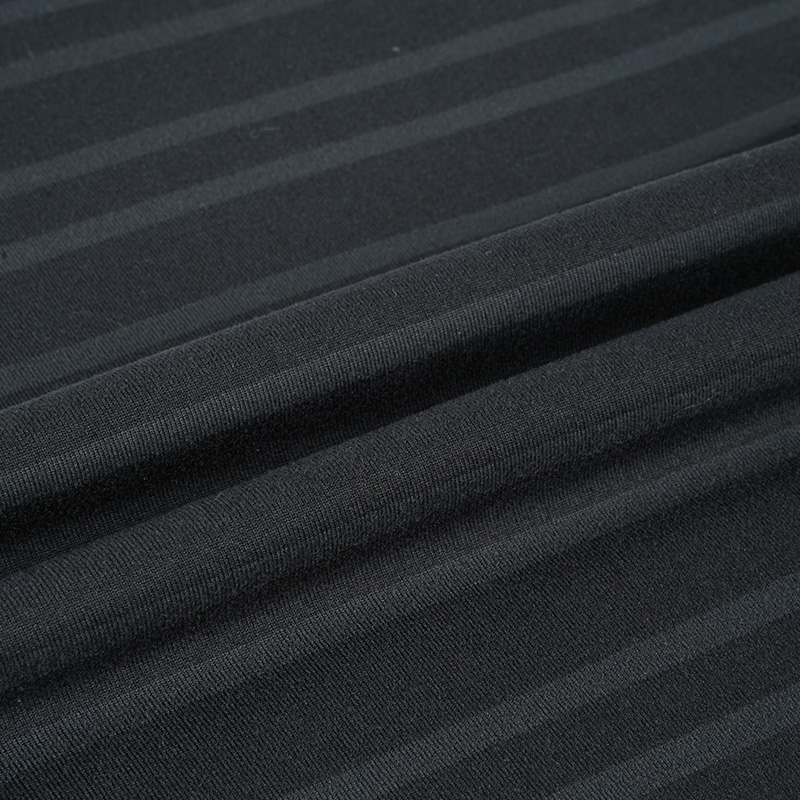We are located in Haining City, Zhejiang Province, one of China's famous knitting industrial Bases.
UV protection in swimwear fabric is achieved through a combination of material composition, fabric construction, and specialized treatments. The main goal is to block or significantly reduce the penetration of ultraviolet (UV) radiation—specifically UVA and UVB rays—through the fabric and onto the skin. This protection is quantified using a rating system called UPF, or Ultraviolet Protection Factor.

What Is UPF and How Does It Work?
UPF is a standardized measurement that indicates how much UV radiation a fabric allows to pass through. For example:
A fabric with UPF 15 allows about 1/15th of UV rays to penetrate, blocking roughly 93.3%.
A UPF 30 fabric blocks 96.7% of UV rays.
A UPF 50+ fabric—considered excellent protection—blocks 98% or more of harmful rays.
The higher the UPF, the greater the sun protection provided by the fabric. This makes UPF-rated swimwear an essential choice for long hours spent at the beach, pool, or during water sports activities.
What Affects the UV Protection of Swimwear Fabrics?
Several key factors influence how effectively a fabric protects against UV radiation:
1. Fiber Type
Certain fibers inherently offer more protection than others. Synthetic fibers like polyester, nylon, and polyamide are known for their superior UV-blocking capabilities compared to natural fibers like cotton. This is because synthetic fibers have tighter molecular structures that are less permeable to UV rays.
2. Weave or Knit Density
Tightly woven or tightly knit fabrics provide less space between threads, which minimizes the amount of UV radiation that can pass through. Swimwear fabrics are typically warp-knitted to achieve this density while still allowing stretch and flexibility.
3. Color and Dye
Dark or vibrant colors absorb more UV radiation than lighter shades, thereby offering more protection. However, special UV-absorbing dyes can also be used in lighter fabrics to enhance their performance.
4. Special Treatments
Many high-performance swimwear fabrics undergo chemical treatments that boost UV protection. These treatments can include:
Titanium dioxide or zinc oxide finishes (similar to sunscreen ingredients)
Proprietary UV-absorbing chemicals embedded in the fiber during production
These treatments are designed to be durable and resistant to washing and chlorine exposure, though performance may diminish over time and with repeated use.
5. Moisture and Wetness
Most fabrics provide less UV protection when wet because water increases light transmission. However, some specially engineered swimwear fabrics are designed to maintain high UPF ratings even when soaked, making them ideal for prolonged water exposure.
6. Stretch
Swimwear is often designed to be form-fitting and stretchy, but over-stretching the fabric can reduce its UV-blocking ability by creating larger gaps between the threads. High-quality fabrics are engineered to maintain density and UPF performance even when stretched.
The Importance of UV-Protective Swimwear
Exposure to UV radiation is a leading cause of skin damage, premature aging, and skin cancer. Traditional sunscreens are essential but can wear off in the water or with sweat. UV-protective swimwear provides a physical barrier that doesn’t wash off or require reapplication, offering consistent protection for sensitive areas such as shoulders, backs, and arms.
For children, athletes, and people with sensitive skin or sun allergies, wearing UPF-rated swimwear is especially important. It allows for extended outdoor activity without compromising skin health.
Conclusion
UV protection in swimwear fabric is a result of a careful balance between material choice, fabric engineering, and technological enhancements. A high-quality UV-protective swimwear fabric doesn’t just offer comfort and style—it also acts as an active defense against harmful sun exposure. Whether you’re swimming laps, surfing, or enjoying a day at the beach, choosing swimwear with a high UPF rating is a smart, skin-conscious decision.

 English
English  Español
Español  عربى
عربى 













